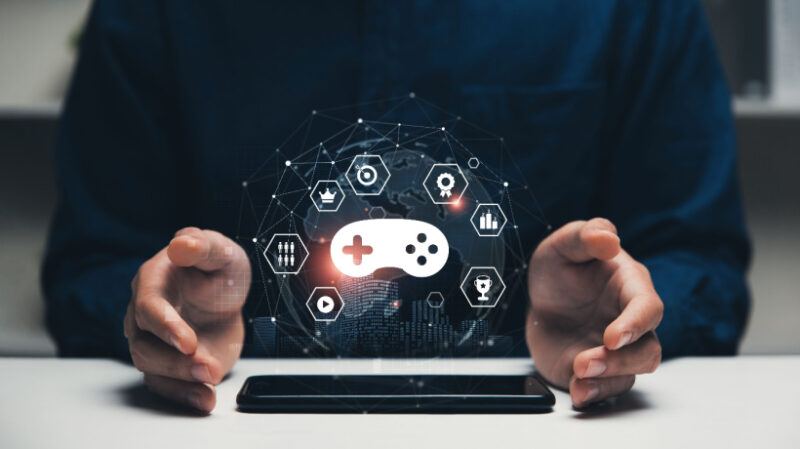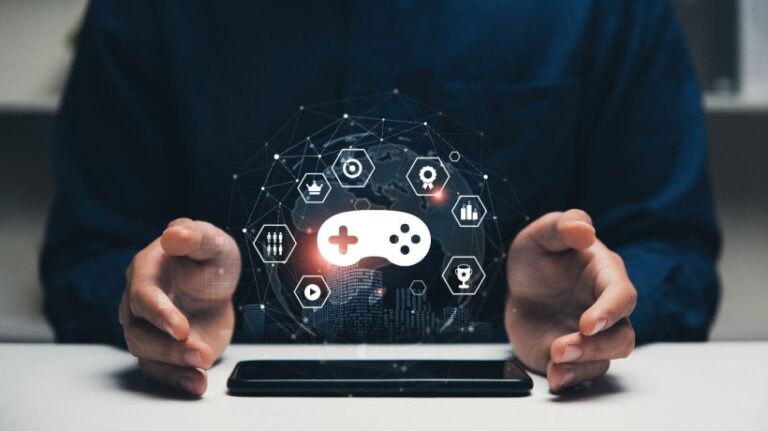
Gamification for Engagement: Make learning at work fun and memorable
Please be honest. Most of us sit through training sessions where they felt like they weren’t over. Click on the slide to keep you awake during the long video and answer quiz that doesn’t actually stick to you. It is not surprising that employee engagement in learning is a real challenge. But what if you don’t have to feel like learning at work like a chore? That’s the gamification stage. It’s not about turning your workplace into an arcade or turning your training into a video game. It’s about bringing enough game-inspired elements to make your learning feel like a challenge you want to complete and a task you have to check off. When done correctly, e-learning gamification creates curiosity, motivates learners, and even builds a sense of friendly competition. And even more importantly, it works.
What is e-learning gamification?
Think of gamification as adding a spark of fun and motivation to the learning process. We are talking about:
Earn badges or points when you complete a module. Competition on the leaderboard. Unlock new levels and content while you’re in progress. Solve interactive challenges based on real workplace scenarios.
It’s not about gimmicks, it’s about psychology. Gamification utilizes how our brains naturally respond to rewards, goals, and feelings of accomplishment. When learners can see their progress, get immediate feedback, or feel part of something bigger, they are more likely to remain attractive and retain what they are actually learning.
Why is engagement so important?
Here it is – engagement is more than just “great.” That’s the difference between people who are rushing to train to get it done and people who really understand how to apply that knowledge to their work.
When the learner is engaged:
They remember more. They are more likely to finish the course. They are motivated to continue their learning.
And when that happens, everyone wins, employees feel more confident, and the companies build stronger, more capable teams. Gamification allows for such engagement by turning learning into an experience, not just events.
So… does gamification really work to boost engagement?
Simple answer: Yes. More and more companies are seeing real results when bringing gamification to e-learning programs. Employees spend more time on learning platforms, increasing course completion rates and actually enjoying the learning experience.
Let’s say you have a new employee. Instead of giving them a stack of materials or a list of 10 videos, imagine traveling to them. Complete the key module and earn points. They unlock the “New Rental Explorer” badge. They gain small abilities of encouragement along the way. They may even be part of a team challenge with fellow beginners.
Suddenly, it’s not just about checking the box, but also about connecting with the company and getting excited about future learning paths. And it’s just onboarding. Gamification is used well in everything from leadership training and compliance courses to customer service simulation and sales realization. It brings the topic back to life by making them more interactive and daring to do what we say… it’s fun.
Why do you find it so rewarding?
Zoom out and talk about human behavior. Wired to enjoy the challenge. I like to solve problems, track progress and get feedback. That’s why games are so popular, from wardle to fantasy football.
Gamification brings the same kind of motivation to learning. It covers progress and a sense of accomplishment every time someone wins a badge, levels up, or sees their name on the leaderboard. It’s powerful. But even more important than points or prizes is what’s happening underneath. Learners continue to build confidence, strengthen their skills and pique their curiosity.
When gamification is thoughtfully designed, it shifts the way you think from “I have to do this training” to “I want to see what’s next.”
It’s not just flashy things
The common misconceptions are: Gamification is all about bells and whistles. But the best gamerized learning is not about over the top visuals or complex game mechanics.
It’s about creating an intuitive, personalized and motivated journey. for example:
Split your content into small bite-sized modules that you feel are achievable. Uses a real scenario where learners make decisions and see results. Give learners the freedom to explore content at their own pace and still move them forward.
This is especially powerful when combining gamification with microlearning with focused learning experiences that are easy to fit into busy schedules. Adding points or badges to complete each will suddenly bring the learner back every day and develop a habit of continuous growth.
Building a learning culture (one game element at a time)
What is one of the most incredible things about gamification? It not only attracts individuals, it also brings together teams. Use leaderboards to create healthy competition, perform department-wide challenges, and recognize top learners in internal newsletters. These little touches help create a learning culture that makes people feel proud of their progress and encourages others to participate.
It is also a great way to support independent learning. When learners can choose what they want to explore next, track their progress and celebrate small victory along the way, they are more likely to take ownership of the development. That sense of ownership has a lasting impact not only on learning, but on how employees manifest themselves, solve problems, and contribute daily.
Let’s get started: A gentle approach works best
If you are new to gamification, you do not need to start a large program at the same time. Start small. Try adding:
A simple badge system for completing modules. A progress bar to show learners how far they have come. A quiz that adapts based on learner’s choices. A challenge at the end of a course simulating real decision-making.
Even a few small changes will surprise you that the e-learning experience can become more rewarding, interactive and human. Remember: Your goal is not to turn your training into a game. The goal is to have a learning experience that employees are actually looking forward to and remember when they’re done.
The Final Thought: Why Gamification is More Important than Previous to Employee Engagement
In today’s rapidly changing world, learning is more than just an annual event. It is a daily necessity. Employees need to maintain, develop their skills and navigate new challenges with confidence. And if the learning experience we offer is not appealing, they don’t stick. Gamification helps you meet this moment by creating a rewarding, motivated, and human-centered learning journey. This will inspire learners to be curious. Connect the team. And it turns everyday training into meaningful growth. So, if you are trying to increase engagement, reduce learning fatigue and build a culture that people want to learn, gamification may be your secret source.
Ozemio
We recognize the very simple yet value of the elemental value, with no transformation occurring in silos. Our talent transformation solutions are holistic, but targeted. We provide tailor-made plans specific to your business requirements


